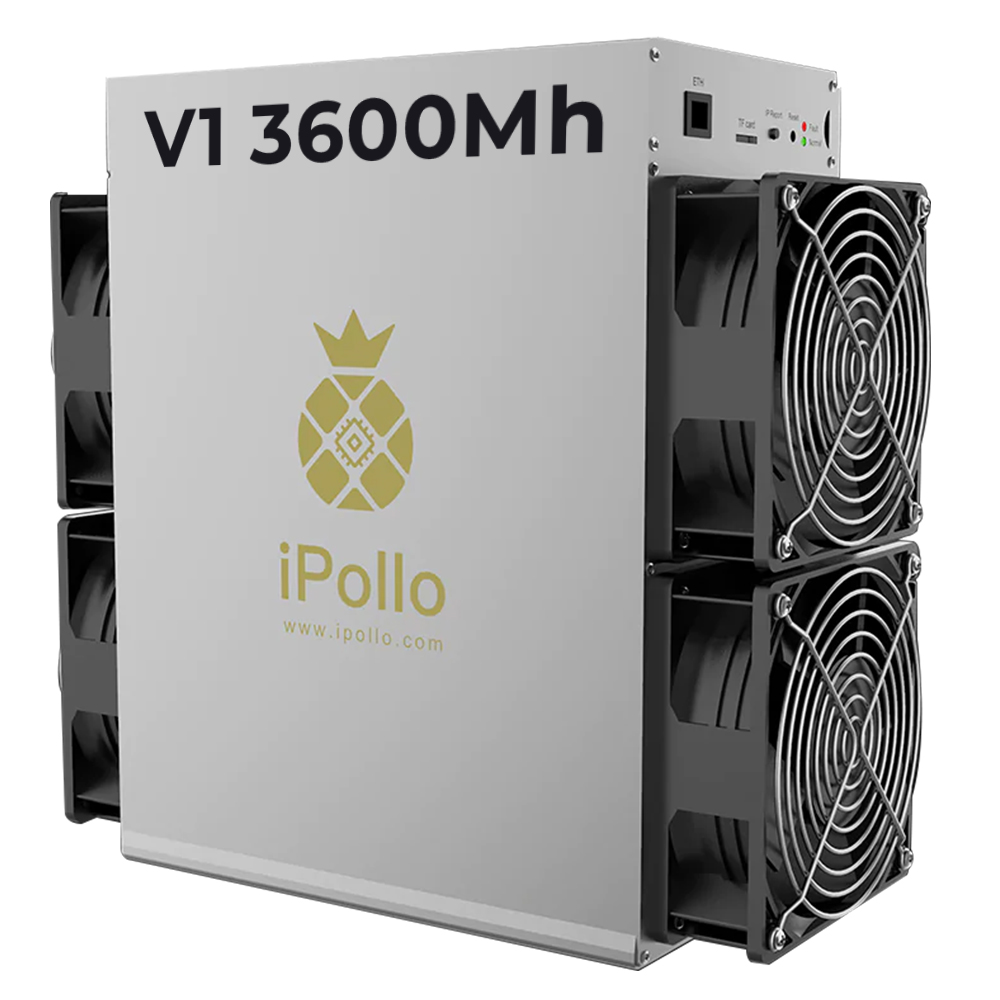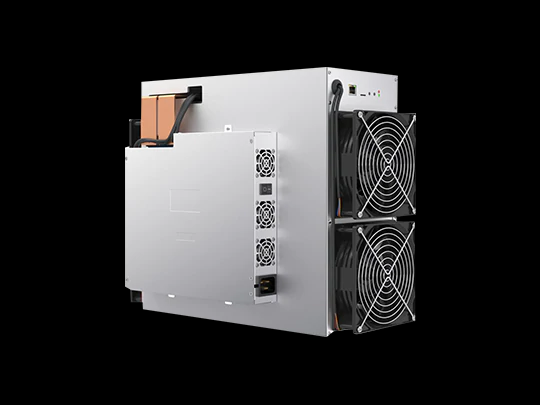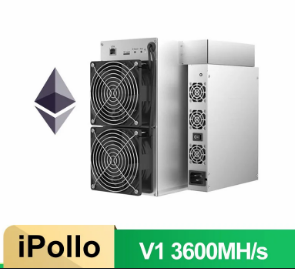How to Calculate Electricity Costs for Running the iPollo V1 Miner
Cryptocurrency mining profitability depends heavily on operational costs, with electricity consumption being the most significant ongoing expense. For operators considering the iPollo V1 miner—a high-performance 3600 MH/s EtHash mining system—understanding how to accurately calculate electricity costs is essential for evaluating return on investment (ROI) and optimizing mining strategies.
This guide breaks down the key factors in determining your iPollo V1’s power expenses, explores efficiency considerations, and provides actionable formulas to project operational costs under different scenarios.
Understanding the iPollo V1’s Power Profile
Before calculating costs, we must examine the miner’s electrical characteristics:

- Rated Power Consumption: 3100W
- Voltage Requirements: 220-240V (standard for industrial mining setups)
- Thermal Design: Quad-fan cooling system maintaining 5-25°C operating temperature
Unlike less efficient miners that fluctuate in power draw, the iPollo V1 maintains relatively stable consumption thanks to its advanced thermal management. This consistency allows for precise cost projections.

The Electricity Cost Formula
The fundamental calculation for daily power expenses is:
` Daily Cost = (Wattage × Hours Operated × Electricity Rate) ÷ 1000 `

Where:
- Wattage: 3100W for iPollo V1
- Hours Operated: Typically 24 for mining operations
- Electricity Rate: Your cost per kilowatt-hour (kWh)
Practical Example
Assume an electricity rate of $0.12/kWh (the U.S. industrial average):
` (3100W × 24h × $0.12) ÷ 1000 = $8.93 per day `
This translates to:
- Weekly: $62.51
- Monthly: ~$267.90
- Annual: ~$3,259.45
Regional Electricity Variations
Electricity rates vary dramatically by location. Here’s how the iPollo V1’s daily costs compare globally:
| Region | Avg. Industrial Rate ($/kWh) | Daily Cost | |—————|—————————–|————| | United States | 0.12 | $8.93 | | Germany | 0.38 | $28.27 | | China | 0.08 | $5.95 | | Russia | 0.06 | $4.46 |
These disparities explain why mining operations concentrate in low-cost regions. A German operator pays 4.75× more daily than a Russian counterpart—a decisive factor in profitability.
Calculating Break-Even Points
To determine how much cryptocurrency the iPollo V1 must mine to cover electricity costs:
` Daily Break-Even Coin Amount = Daily Electricity Cost ÷ Coin Price `
Example with Ethereum (ETH) at $3,000: ` $8.93 ÷ $3000 = 0.00298 ETH/day `
The miner must produce at least 0.00298 ETH daily just to offset power expenses.
Advanced Calculation: Incorporating Pool Fees & Hardware Efficiency
Real-world calculations should account for:
- Mining Pool Fees: Typically 1-2% of earnings
- Hardware Degradation: Minimal with iPollo V1’s modular design
- Network Difficulty Adjustments: Affects daily coin output
An adjusted formula:
` Net Daily Profit = (Daily Coin Revenue – Pool Fees) × Coin Price – Electricity Cost `
Operational Strategies to Reduce Costs
1. Time-of-Use Rate Optimization
Some utilities charge lower rates during off-peak hours (e.g., 10PM-6AM). If your mining facility can flexibly scale operations, aligning high-power activities with these windows cuts costs.
2. Cooling Efficiency Enhancements
The iPollo V1’s quad-fan system already optimizes thermal performance, but pairing it with:
- Ambient temperature control (ideal: 15-20°C)
- Directed airflow systems
Can reduce the cooling load, potentially shaving 3-5% off power consumption.
3. Voltage Optimization
Operating at 240V instead of 220V improves electrical efficiency by ~1.5%, lowering effective wattage to ~3050W.
Long-Term Cost Projections
For investors evaluating multi-year operations, consider:
- Electricity Rate Trends: Historical inflation averages 2-3% annually for industrial power
- Hardware Lifespan: iPollo V1’s professional-grade components typically maintain efficiency for 3+ years
- Cryptocurrency Market Cycles: Bull markets allow absorbing higher power costs
A 3-year projection might include:

` Year 1: $3,259 (electricity) Year 2: $3,327 (+2% rate hike) Year 3: $3,393 (+2% rate hike) Total: ~$9,979 `
Conclusion: Smart Cost Management for Maximum ROI
The iPollo V1’s combination of high hashrate (3600 MH/s) and efficient power use (3100W) positions it as a cost-effective solution for EtHash mining—especially in regions with sub-$0.10/kWh rates. By precisely calculating electricity expenses and implementing strategic optimizations, miners can significantly enhance profitability.
For operators in high-cost areas, exploring renewable energy integrations or colocation services in low-rate regions may prove essential. Meanwhile, those with access to competitive power can leverage the iPollo V1’s reliability and maintenance advantages for sustained returns.
Ultimately, mastering these calculations transforms electricity from a blind expense into a managed variable—one that separates profitable mining ventures from marginal operations.